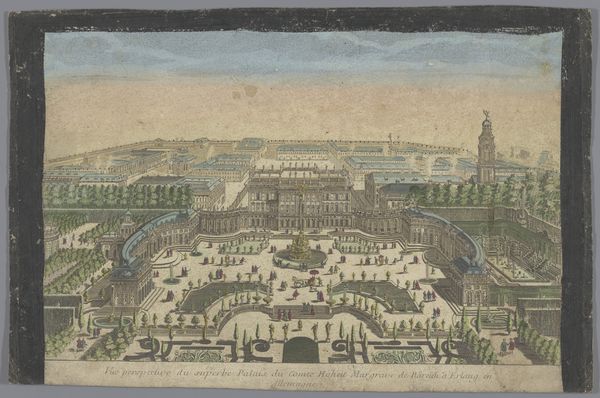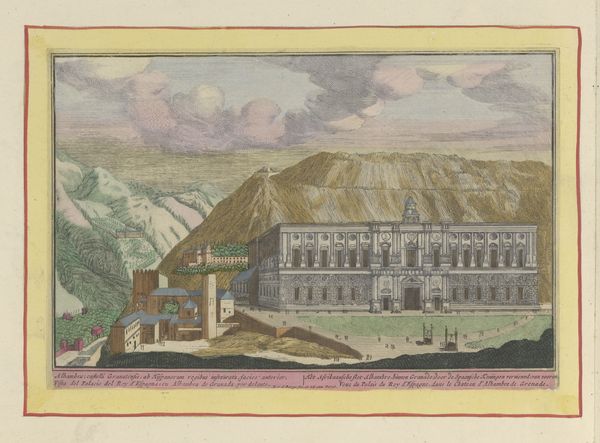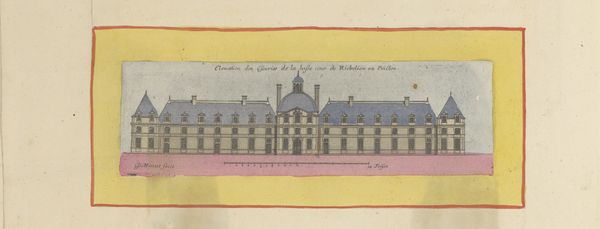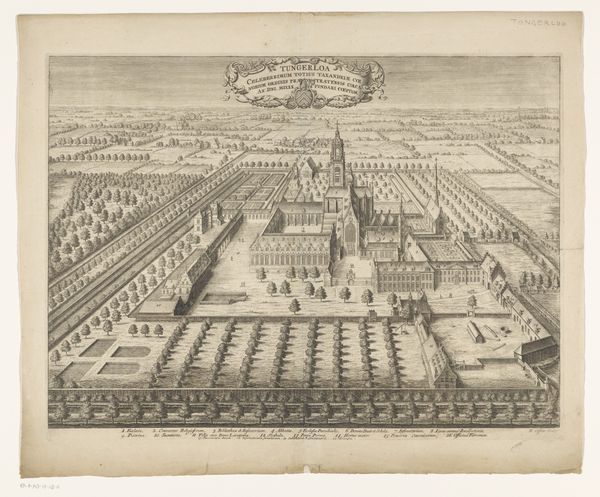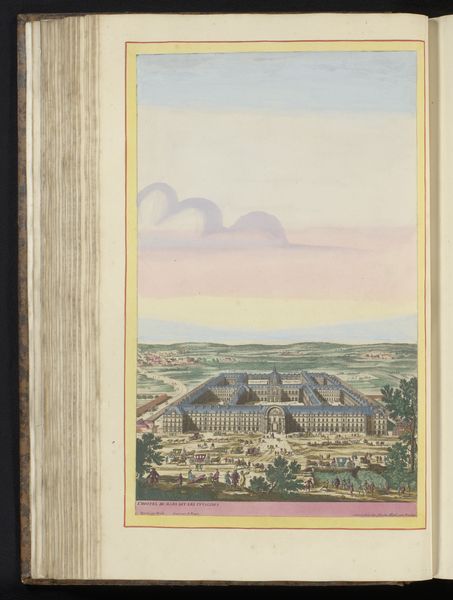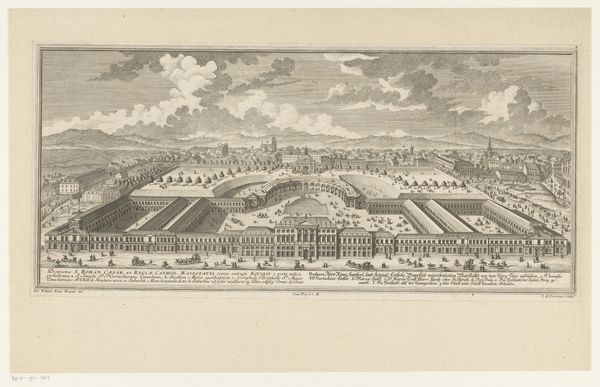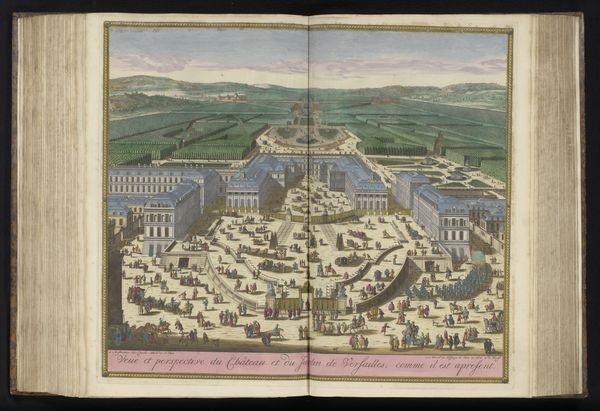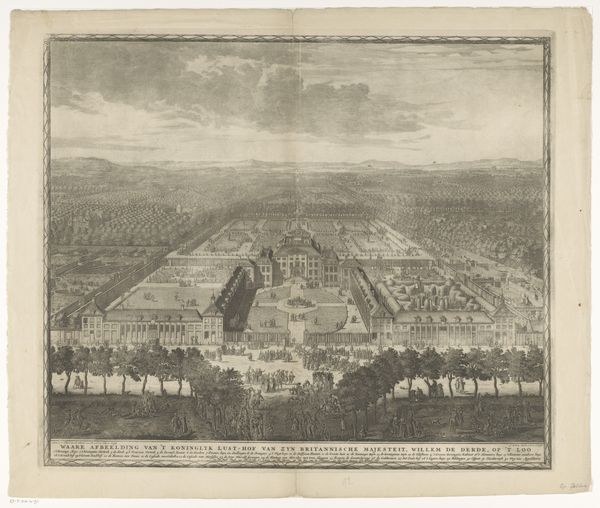
drawing, coloured-pencil, print
#
drawing
#
coloured-pencil
#
baroque
# print
#
landscape
#
perspective
#
coloured pencil
#
cityscape
Dimensions: height 163 mm, width 251 mm
Copyright: Rijks Museum: Open Domain
Curator: From the Rijksmuseum, we're looking at a print titled "View of the Escorial in Bird's-Eye Perspective" created between 1694 and 1737, attributed to Pieter van den Berge. It appears to be rendered in coloured pencil and ink on paper. Editor: My initial reaction is one of intense order. It's almost suffocating in its precision and symmetry. The perspective flattens the space, creating this overwhelming sense of control. Curator: It's fascinating how van den Berge has employed this bird’s-eye view. It presents the Escorial, not simply as a building, but as an embodiment of power and order. Think of the period—absolute monarchies were solidifying their grip across Europe, and architecture became a visual tool for asserting dominance. Editor: Yes, absolutely. The sheer scale communicates authority, doesn’t it? Look how the artist emphasizes the geometric precision, extending to the gardens and surrounding structures. There's very little left to natural wildness or disorder; everything seems rigorously planned and controlled. I'm also struck by the subdued palette – pale blues and greens that almost drain the color, amplifying its austere impression. Curator: The restrained colour palette could also be a stylistic choice, adhering to the aesthetic principles of the Baroque period when clarity, rationality and idealized forms were prized above pure representational colour. This piece becomes a fascinating record of how an institution consciously fashioned its public image through controlled, meticulously planned visual strategies. And indeed, van den Berge highlights the function of art within larger power structures. Editor: I agree entirely. One notices a dialogue of constraint and order, reflecting more profound societal beliefs. It’s a reminder of the profound relationship between architecture and power. Curator: Reflecting upon our discussion, this print of the Escorial offers valuable insight into the complex connection between aesthetic and political structures during its time. Editor: It indeed invites one to consider what artistic visions and visual culture say about a society’s ideologies, particularly the subtle means of expressing control.
Comments
No comments
Be the first to comment and join the conversation on the ultimate creative platform.
